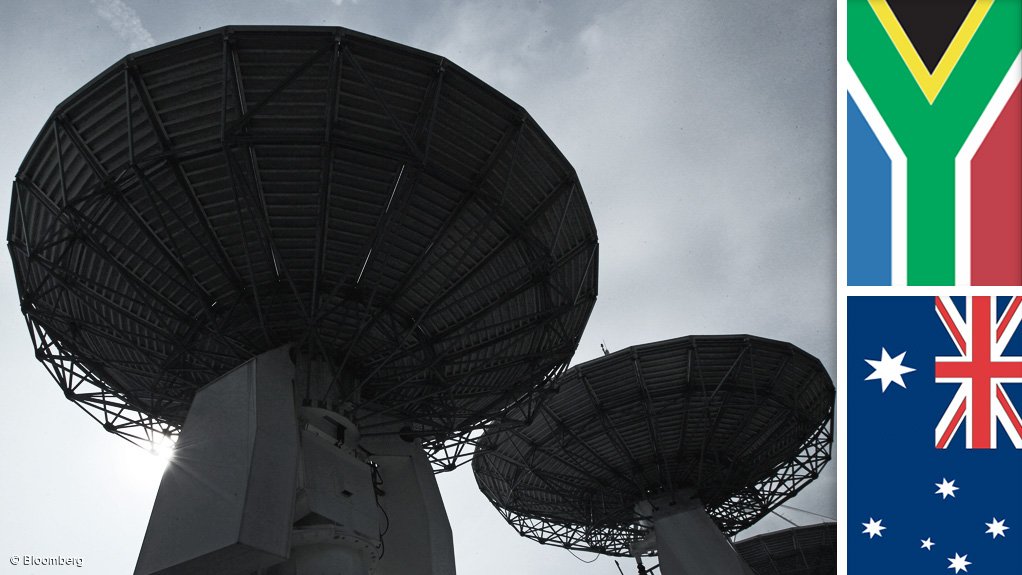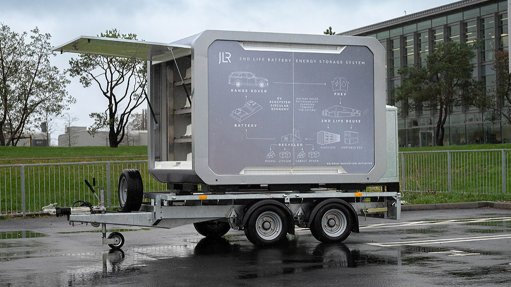Square Kilometre Array project, Africa and Australia
Name of the Project
Square Kilometre Array (SKA) project.
Location
Africa and Australia.
Project Owner/s
The international SKA project is run by the UK-based SKA Organisation, which currently comprises Australia, Canada, China, Germany, Italy, the Netherlands, New Zealand, South Africa, Sweden and the UK. India is an associate member and is expected to become a full member shortly.
The SKA Organisation formalises relationships between the international partners and centralises the leadership project.
The project in South Africa is the responsibility of a separate, local organisation, SKA SA.
Project Description
The SKA will provide a collecting area of one-million square metres, which demands a revolutionary break from traditional radio-telescope design.
The project will use three types of antennas (radio-wave receptors) – dishes, midfrequency aperture arrays and low-frequency aperture arrays – to provide continuous frequency coverage from 70 MHz to 10 GHz. Combining the signals from the antennas will create a telescope with a collecting area equivalent to a dish with an area of about 1 km2.
The first phase of the SKA, known as SKA1, will result in the creation of two complementary instruments, one each in South Africa and Australia.
The South African instrument, known as SKA1_Mid, will comprise about 200 dishes and operate in the 350 MHz to 14 GHz frequency range. The Australian instrument, known as SKA1–Low, will comprise more than 100 000 (perhaps as many as 130 000) dipole antennas and will operate in the 50 MHz to 350 MHz frequency range.
SKA1–Mid will include the 64 dishes of the South African precursor to the SKA, the MeerKAT radio telescope array, being built in the Karoo region. Australia’s precursor, the Australian SKA Pathfinder (better known as Askap and already in operation) will serve as surveying instrument for the SKA.
The central regions, in Australia and in South Africa, will contain cores, each 5 km in diameter – one for each antenna type. Fifty per cent of the collecting area will be within the central cores. The aperture array antennas will extend to about 200 km from the core regions. In Africa, the dishes will be positioned at distant stations that are 3 000 km from the core regions.
The construction of the SKA will be phased.
Phase 1 (SKA1) will comprise about 10% of the array and will include dishes and low-frequency aperture arrays.
The Australian SKA Pathfinder and South Africa’s Meerkat precursor dishes will be incorporated in the SKA1. The Murchison Widefield Array, located at the Australia site, is another precursor telescope to the SKA.
Phase 2 (SKA2) will extend the array with midfrequency aperture arrays and further dishes.
All the dishes for SKA2 will be located in Africa. All the low-frequency aperture arrays will be located in Australia and all the midfrequency aperture arrays will be built in Southern Africa.
The phased construction of the telescope will mean that the SKA can start operating before construction is completed.
Potential Job Creation
More than 1 000 engineers and scientists in 20 countries have been involved in designing the SKA over the past five years, with new research programmes and educational initiatives and collaborations being created in various countries to train the next generation of space scientists and engineers.
Capital Expenditure
SKA1 is expected to cost €650-million (about R8.9-billion).
Planned Start /End Date
Construction of the first phase of the SKA is expected to start in 2021.
Latest Developments
The international engineering consortium tasked with planning the assembly, integration and verification (AIV) of the SKA radio telescope has formally completed its work, representing another crucial step towards the construction of the world’s largest radio telescope.
The work completed by the consortium will be included in the overall system critical design review for the SKA, scheduled for later this year, which will ensure that all the different design elements of the SKA align with one another.
“The AIV programme is critical to ensure that telescope elements that have been designed and built by a dispersed global community are tested, assembled and verified in a rational and thorough way, thereby ensuring that the entire telescope system will work as designed, to budget and on schedule,” South African Radio Astronomy Observatory (Sarao) chief technologist professor Justin Jonas has said.
The construction of radio telescopes has demonstrated that the roll-out activities are often underestimated, resulting in delays in deployment, owing to the re-engineering and retrofitting of components, which, in turn, increased the total cost of the system.
Many issues discovered during “downstream” integration and verification are the result of “upstream” neglect. The sheer scale and complexity of the SKA makes it essential that AIV planning is done at an early stage, in parallel with the work of the element-design consortia.
Key Contracts and Suppliers
None stated.
On Budget and on Time?
The project is reportedly on course.
Contact Details for Project Information
SKA South Africa, email enquiries@ska.ac.za.
Comments
Press Office
Announcements
What's On
Subscribe to improve your user experience...
Option 1 (equivalent of R125 a month):
Receive a weekly copy of Creamer Media's Engineering News & Mining Weekly magazine
(print copy for those in South Africa and e-magazine for those outside of South Africa)
Receive daily email newsletters
Access to full search results
Access archive of magazine back copies
Access to Projects in Progress
Access to ONE Research Report of your choice in PDF format
Option 2 (equivalent of R375 a month):
All benefits from Option 1
PLUS
Access to Creamer Media's Research Channel Africa for ALL Research Reports, in PDF format, on various industrial and mining sectors
including Electricity; Water; Energy Transition; Hydrogen; Roads, Rail and Ports; Coal; Gold; Platinum; Battery Metals; etc.
Already a subscriber?
Forgotten your password?
Receive weekly copy of Creamer Media's Engineering News & Mining Weekly magazine (print copy for those in South Africa and e-magazine for those outside of South Africa)
➕
Recieve daily email newsletters
➕
Access to full search results
➕
Access archive of magazine back copies
➕
Access to Projects in Progress
➕
Access to ONE Research Report of your choice in PDF format
RESEARCH CHANNEL AFRICA
R4500 (equivalent of R375 a month)
SUBSCRIBEAll benefits from Option 1
➕
Access to Creamer Media's Research Channel Africa for ALL Research Reports on various industrial and mining sectors, in PDF format, including on:
Electricity
➕
Water
➕
Energy Transition
➕
Hydrogen
➕
Roads, Rail and Ports
➕
Coal
➕
Gold
➕
Platinum
➕
Battery Metals
➕
etc.
Receive all benefits from Option 1 or Option 2 delivered to numerous people at your company
➕
Multiple User names and Passwords for simultaneous log-ins
➕
Intranet integration access to all in your organisation





















